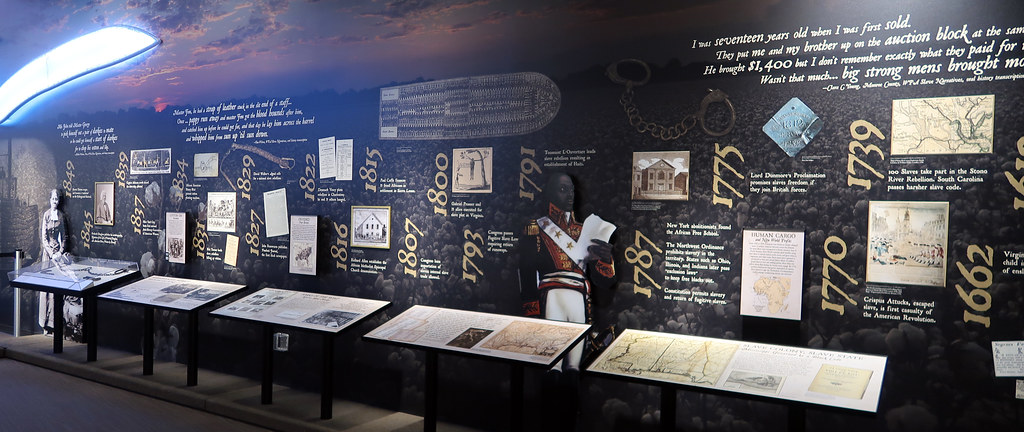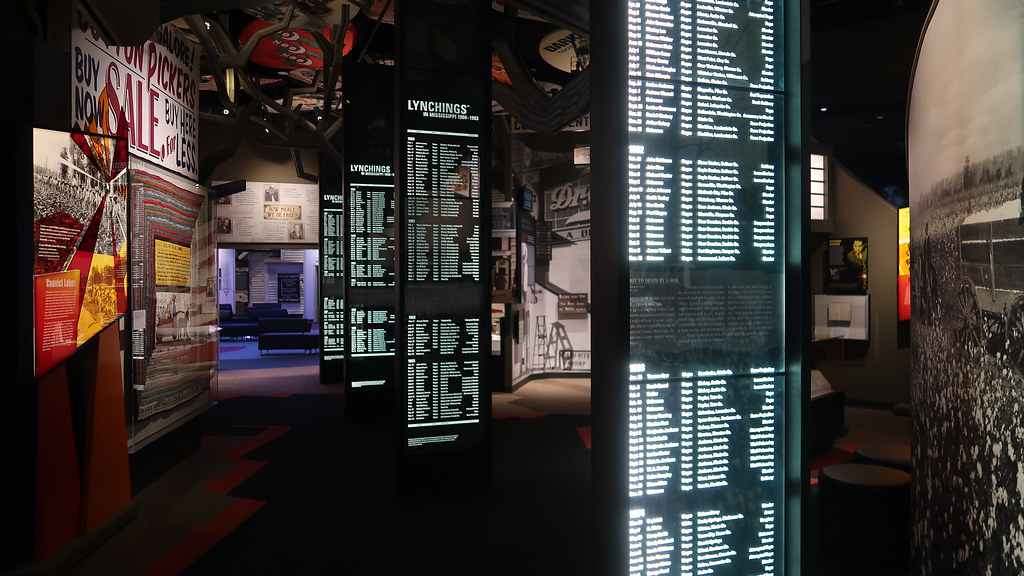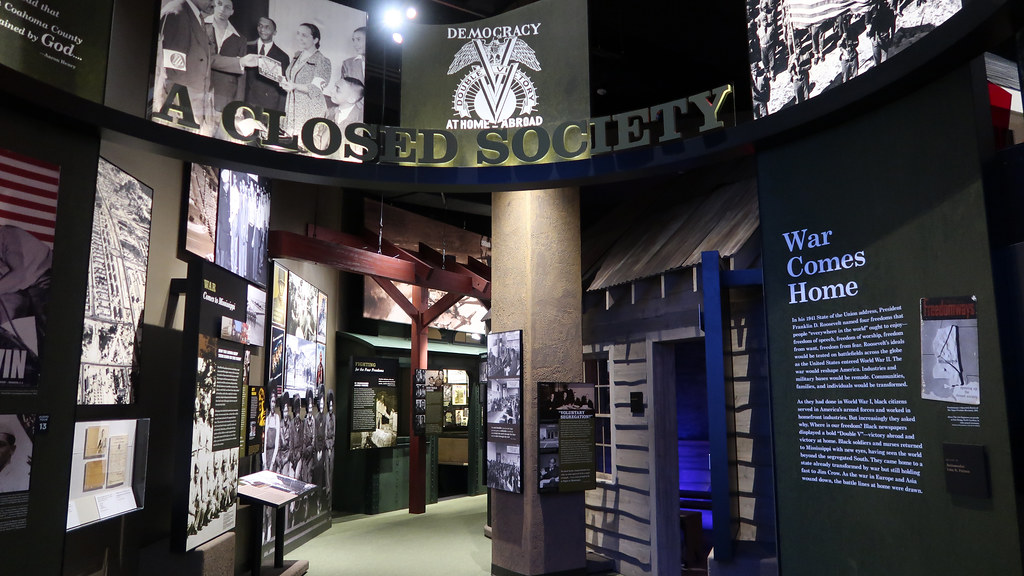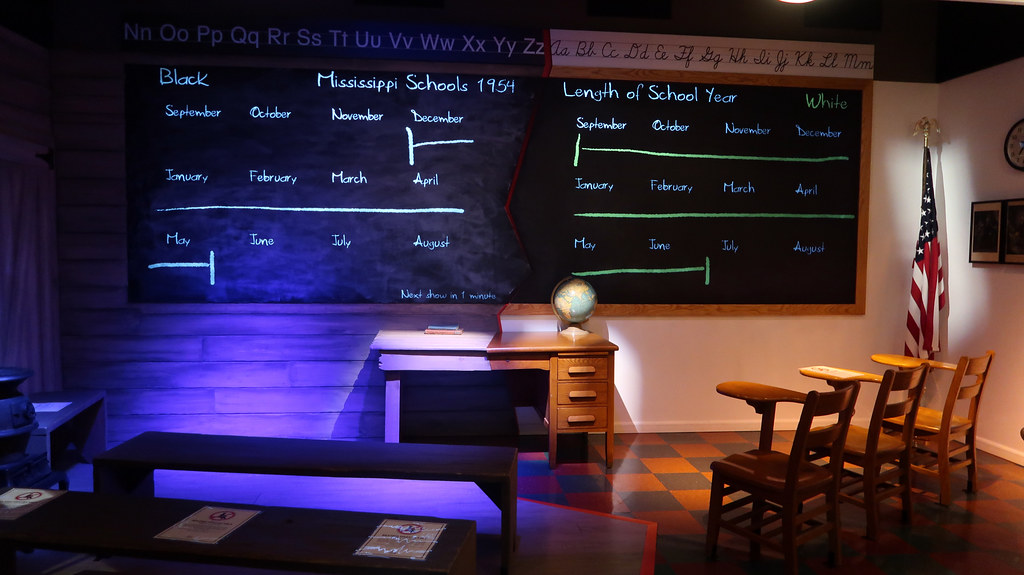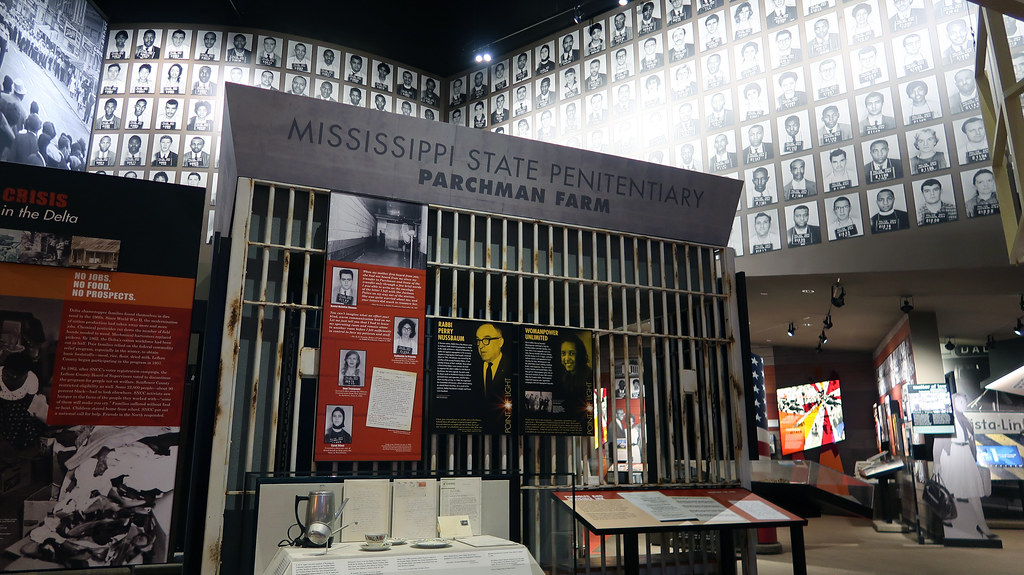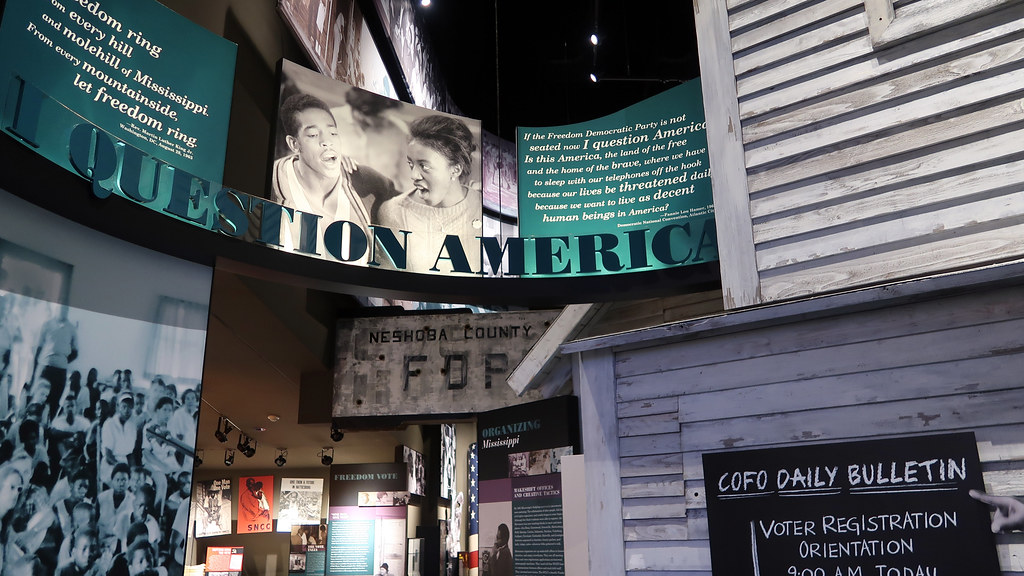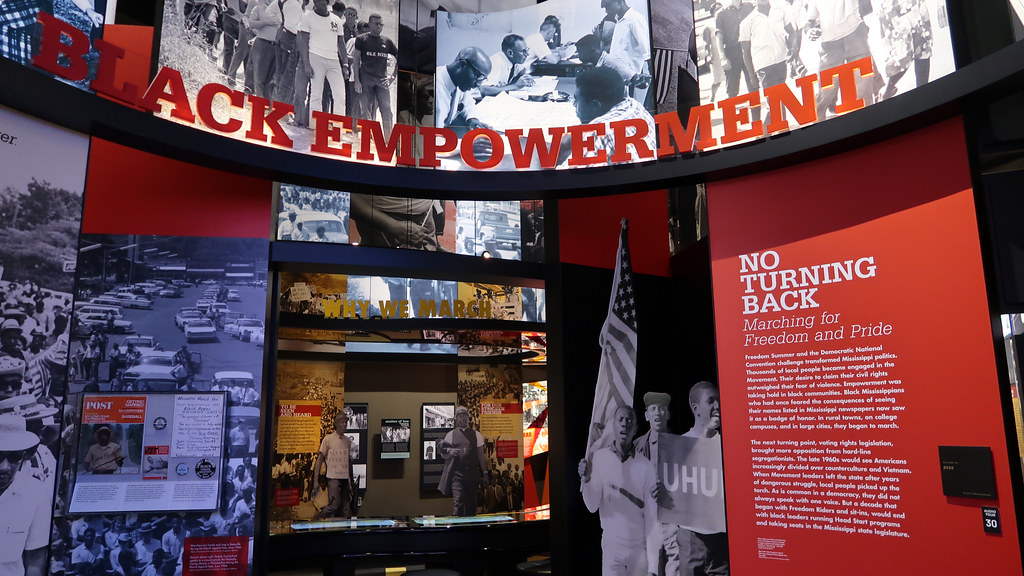In order to stay on schedule, I’m moving through the southeastern states a bit more quickly than anticipated. I’m only staying three nights in Ridgeland, Mississippi, a northern suburb of Jackson, the capital of Mississippi—one for travel, one for work, and one for a tourist activity. The most popular and highly-rated tourist attraction in Jackson seemed to be the Mississippi Civil Rights Museum, so that’s where I decided to spend my off day.
The museum opened with a section called the “Mississippi Freedom Struggle,” which gave a broad overview of the Civil Rights Movement and provided a general timeline of its progression.
Afterwards, the exhibits started with “Mississippi in Black and White,” which spotlighted the African-American leaders of the Civil Rights Movement.
Also in this section were five monoliths listing, honoring, and memorializing lynching victims. These monoliths were my favorite part of the museum—not only did they just provide raw data for you to interpret on your own, but I did not realize that so many people were lynched for such mild “crimes,” many of which were not even proven. Intertwined in the lists were excerpts of news articles that covered some of these lynchings.
In the center of all these sections was a circular area that housed a light structure called “This Little Light of Mine,” which was built to honor the civil rights activists who gave up their lives to further the cause. It also had music from the era playing that civil rights activists used to rally morale and faith from supporters.
Next up was “A Closed Society,” a section that explored how the experiences of Black Mississippians who had served in World War II catalyzed the Civil Rights Movement.
Within this section were two short films, the first of which was in a small classroom. The film showed how Mississippi refused to honor equality among races and would separate whites from those with colored skin. It also displayed a lot of statistics about how Black children were at a substantial disadvantage when it came to educational resources compared to their white counterparts.
The next feature short film was about the lynching of Emmett Till, a Black child who had been killed by white men. This film showed that, even though the nation was this far into the Civil Rights Movement, whites could still get away with killing Blacks. Apparently, Emmett Till’s slaying was a big part of driving the Movement forward because his mutilated face was printed in media outlets so people could see for themselves just how brutal the killing was.
In “A Tremor in the Iceberg,” the museum showed how a new generation of leaders gave the Movement a fresh sense of urgency and drive.
The short film in this section covered Medgar Evers’ assassination, and how, somehow, a white man could still get away with killing a Black man. Because of the systemically racist nature of jury selection and how it was based on voter registration, the jury was hung, and the assassin wasn’t convicted until decades later.
In the next section, “I Question America,” things really picked up in the Movement as it garnered more support, but it still wasn’t easy. The two feature films in this section were one in a church that showed the efforts of the Student Nonviolent Coordinating Committee and the Council of Federated Organizations, and another about three activists who had gone missing after an encounter with the police.
As the timeline creeps closer to present day, “Black Empowerment” highlighted the triumphs of the Movement that ultimately led to the Voting Rights Act of 1965. This section also housed some artifacts from the period.
Finally, “Where Do We Go From Here?” featured some of the stories from the people of the Movement. This was also a place where museum participants could contribute their own thoughts on what’s next for civil rights.
As a general overview of the museum, this was another one of those spots where I unexpectedly spent a lot more time than I anticipated. This museum had a way of pulling you in and keeping you hooked on finding out what happened next.
I think one of the reasons the museum had this effect on me goes hand-in-hand with something else I found out, which is, how little I actually knew about the Civil Rights Movement. I was obviously aware that this had happened in the past, but after reading through a lot of the exhibits and displays, I realized that I had confused a lot of what happened in the mid-1900s with what had happened in the mid-1800s. More specifically, a lot of events that I thought happened in the 1850s and 1860s actually took place in the 1950s and 1960s, but I just wasn’t aware of it.
I can definitely attribute this to the fact that I never took history seriously during school so I probably never retained any of this when I learned it, but learning it now and having it completely challenge my existing understanding of the Civil Rights Movement definitely made me feel very ignorant.
This was also very eye-opening, in the sense that all of this was happening not too long ago. When my grandmother was my age, there were Black people getting shot and killed just for being a nuisance, and there would be a jury of people who would look at the case and say “eh, the white guy’s innocent,” which is mind-blowing to me. This in particular is an example of one of those things that I misunderstood by a factor of a century—I expected stuff like this to happen in the 1850s, but not in the 1950s.
I thought this was a great museum. The way it was organized made me hungry for more knowledge, and it kept my attention throughout a bulk of the exhibits, which I personally think is impressive for someone who has historically hated learning about history.
The short films were also unique in the sense that their presentation always included some extra dimension and element of display—either using multiple screens, having differently-shaped screens, or having physical light-up artifacts in the background of the films. The museum took it a step beyond just playing videos that you otherwise would just be able to watch on YouTube.
Note that the Mississippi Civil Rights Museum is part of the “Two Mississippi Museums” experience, with the other half containing the Museum of Mississippi History. Because I spent so much time on the Civil Rights Museum side, I didn’t really have much time to go through the Museum of Mississippi History, so I ended up just photographing everything on that half so I could look back through it later.
If you plan on scheduling a visit here, which I would highly recommend as a must-do activity if you’re ever in the Jackson area, then this is an all-day, open-to-close kind of museum.
